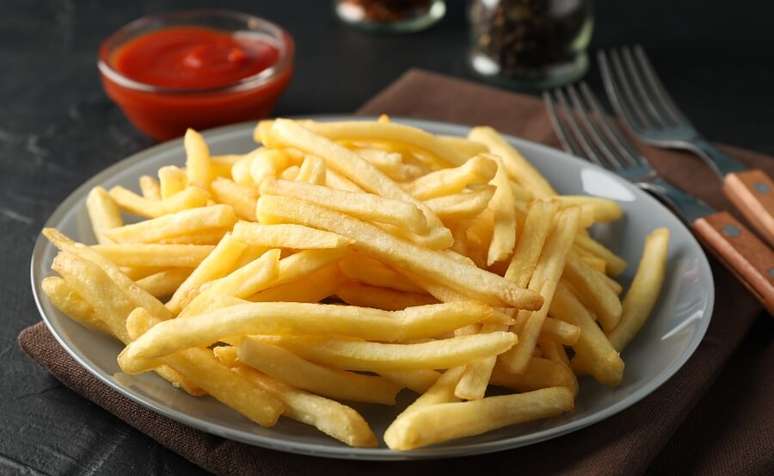Fried rice and eggs also have higher levels of advanced glycation end products than their cooked versions.
Sugar is among the main causes of premature skin aging and, for this reason, it is a recurring theme in international Dermatology congresses.
“Excessive consumption of sugars and carbohydrates triggers a glycation process, in which glucose released into the blood binds to skin proteins, forming AGEs: advanced glycation end products. These AGEs cause tissue disorders, resulting in loss of skin elasticity, wrinkle formation, reduced healing capacity and accelerated aging,” explains pharmacist Patrícia França, scientific director of Biotec Dermocosméticos.
However, at this year’s American Dermatology Congress, which took place in New Orleans, USA, between March 17 and 21, the topic was approached from a new perspective: the glycation process is not linked only to the consumption of sugar, but also to the way in which he prepares food.
“One of the main factors related to the glycation of foods is the preparation method. This is because subjecting foods to high temperatures, as in the case of frying, in a short period of time favors oxidation and, consequently, the formation of AGEs in the body. While a cooked potato has a tiny AGE level – equal to 1 – the same fried food has an AGE level equal to 87,” explains the pharmacist.
High food temperatures
According to the expert, in general, the faster foods are subjected to high temperatures, the more AGEs are produced. To get an idea of how this process works in practice, the studies presented during the Congress demonstrated, for example, that the same is true for rice, which when cooked has an AGE level of 1 versus 220 when fried. Hard-boiled and fried eggs also have different AGE values: 1 and 62, respectively.
Of course, it is impossible to completely abandon some preparation methods, such as frying, because each has a different purpose. But it is advisable to vary the methods when preparing food.
“When possible, choose preparation methods that form fewer AGEs, for example favoring cooked or steamed foods. In fact, studies suggest that people of certain cultures look younger in old age precisely because they prefer to steam their foods, thus avoiding the formation of AGEs,” recommends Patrícia.
Prepare the meat
In this sense, an important point concerns the preparation of meat, which is among the main foods that contribute to the accumulation of AGEs in the body.
“It has been shown that marinating meat in an acidic medium, such as lemon juice or vinegar, for an hour before cooking can prevent the formation of AGEs by 50%,” he says.
However, since the formation of AGEs does not only occur during food preparation, but also in the body depending on what we consume, it is essential to take other precautions to combat glycation damage, including premature skin aging.
“It’s important to limit your consumption of simple sugars, meat and processed foods and invest in a diet rich in fruits, vegetables, grains and whole foods. Furthermore, diabetic patients need to keep their blood sugar levels under control,” says Patrícia França, who also warns of the importance of paying attention to hidden sugars that are incorporated into processed foods to make them more palatable.
“Sucrose, fructose, glucose, maltodextrin, glucose or corn syrup, dextrose, maltose, dextrin, oligosaccharides, glucose-fructose syrup are also simple carbohydrates that should be consumed in moderation,” he explains.
Sugar is omnipresent
Given the typical diet of modern life and the fact that sugar is present in some form in the vast majority of foods, the specialist still recommends the oral integration of active ingredients capable of systematically combating glycation, as in the case of Glycoxil .
“Glycoxil is a carcinine that has an anti-glycating action, as it prevents the union of the protein with the glucose molecule; deglycating agent, as it promotes the separation of glucose, leaving proteins free; and antiglycooxidant, as it prevents the formation of AGEs and their oxidation”, underlines the scientific manager of Biotec Dermocosméticos.
To prevent glycation directly on the skin, the use of cosmetics formulated with active ingredients that specifically act on this process is also recommended. Fortunately, anti-glycant ingredients are increasingly being incorporated into cosmetics. An example of an active ingredient to look for in the product formulation is Alistin.
“Alistin is a peptide with the ability to protect the skin in three dimensions: the cell membrane, proteins and DNA. Equipped with antioxidant power, which also contributes to the immune health of the skin, the ingredient acts as an antiglycant and deglycant, preventing sugar from binding to proteins and reducing the production of AGEs”, concludes Patrícia França.
inspires transformation in the world of work, in business, in society. Compasso, a content and connection agency, is born.
Source: Terra
Ben Stock is a lifestyle journalist and author at Gossipify. He writes about topics such as health, wellness, travel, food and home decor. He provides practical advice and inspiration to improve well-being, keeps readers up to date with latest lifestyle news and trends, known for his engaging writing style, in-depth analysis and unique perspectives.









